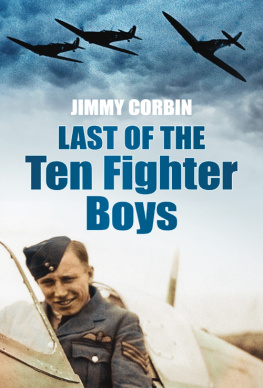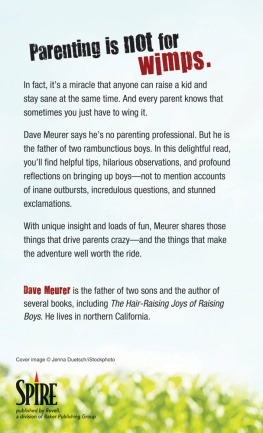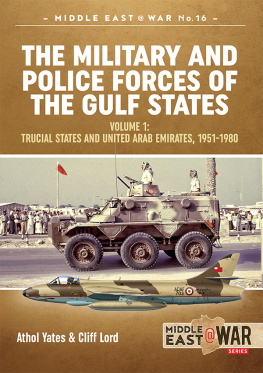To the Memory of PETER STUDD, KEN GILLIES, GEORGE CORBETT, Sgt. SMITH, JOHNNY MATHER, MAXY MAXWELL, BUTCH BAKER, MOULDY MILDREN, PETER KING, Flight-Sergeant HAYMAN, Sgt. Rob TAYLOR, Sgt. GREEN, Sgt. CLAUDE PARSONS, TED HOGG, PICKLE PICKERING, and BOGLE BODIE, all of the old squadron, who lost their lives as they would have wished, flying SPITFIRES in defence of their country, is this book very humbly dedicated.
It was November 1940 and I and the other pilots of 66 Squadron were sheltering from the cold in the dispersal hut at Biggin Hill aerodrome, each of us glad to be back from another sortie. The conversation flowed back and forth, very little of it serious, then Sqn Ldr Athol Forbes joined us. He had aspirations of becoming a writer after the war. He thought it would be a good idea if we pilots wrote the stories of our experience while our memories were fresh from the heat of battle. He would edit them and have them printed and published. We eventually got round to this in early 1941 and ten of us handed our stories to Sqn Ldr Forbes. The result was the book Ten Fighter Boys published in 1942 by Collins.
The pilots were a mixed bunch from many walks of life and various experience as combat pilots NCOs and officers. It is sad to say that some of the pilots were killed before the book was published.
My particular effort was written in about March 1941 when I was 23 years old, the second oldest in the squadron at that time. It was always hard when we lost pilots but we could not afford to dwell on these occasions. We had a job to do and dying was a very possible part of the job. We all did our best and now I do my best to remember the good times and not the bad.
I was surprised and delighted when I was informed that Collins were re-issuing the book after all these years, over 66 years. It will be a very fitting tribute to my old colleagues of 66 Squadron, all of them no longer with us. It will also be great for any of their families and friends. They were a fantastic bunch of young men, all characters in their own way, good fun to be with and we always had a very strong sense of trust. I am proud and very grateful to have had the privilege of knowing them.
Looking back I think I really enjoyed my flying time especially in such a beautiful aeroplane, the magnificent Spitfire. It was an extraordinary time to have lived through, the fantastic sense of comradeship, and the trust between us kept us going through the many days often fraught with danger. We had our moments of triumph and of course fear and I was one of the lucky few to survive to tell the tale. I must finally add that the publishing of my book Last of the Ten Fighter Boys has brought me refreshed interest and many new friends. It was amazing that during my signing sessions a number of people turned up with a copy of Ten Fighter Boys for me to sign an indication of how the book has been cherished over the years. Now it will be available for a new audience.
Jimmy Corbin
THE IDEA occurred to me one morning over a cup of coffee. My squadron had just returned from a sortie involving a spot of bother with a large number of Huns, and we pilot boys were taking it easy. General conversation was going on about what was to be done when the war had finished and there were no vacuum cleaners to be sold. Someone or other had decided to take a dozen battlescarred Spitfires over to America complete with war veteran pilots to give displays of aerobatics and fake combat over various parts of the States.
I remember thinking it a good idea. Then the idea of this book sprang to life. I had always been interested in journalism, and for some unknown reason thought that I would be some use at the game. I knew that after the last war thousands of books had been published on life in the trenches, aerial combat, naval actions, etc. But why wait until after the war? People would be so much more enthralled to read first-hand about events that were going on all round at the time of reading. Even more so if the book was written jointly by a few of the few who were still living through all these immense happenings.
And we got to work. We began in November, 1940, and here, after many months of trial and error, is the result, by ten pilots, most of whom have seen action in the Battle of Britain, and later, in the Battle of France.
Three of the original authors are now dead killed in action. A number of other pilots started to write about their flying experiences with us, but they were killed before their work had assumed sufficient proportions for inclusion in the book. But of the ten pilots whose work you are about to read, seven are still alive at the time of writing. God only knows how many will see the war through.
The original idea was that all the pilots in the squadron should write a few thousand words about their experiences in flying and combat. Each pilot would in this way write a complete chapter of the book.
No effort has been made to alter the phraseology. What you are about to read is as pilots would and did express themselves. The language is not always drawing-room. One doesnt think in terms of drawing-rooms when one is 30,000 feet above the earth, turning and twisting to avoid a hail of lead and explosives. Raw, primitive, the instinct of self-preservation always to the foreground that is how ones mind works under those conditions, and in that manner this book is written.
I will give you a brief outline of the squadron concerned, and then of the pilots who are mentioned in the book.
The squadron was formed in the last war, and after disbandment re-formed in 1936. It was the original Spitfire Squadron, and carried out all the necessary squadron tests on that most loved of all aircraft.
The outbreak of war found it in East Anglia, and it moved nearer the coast just before Dunkirk. It fought over Rotterdam, The Hague, Dunkirk, and moved into the front line of London at the end of August, 1940.
Since then, it has done its quota over the Atlantic, over the North Sea, France, Belgium and Holland. I think its the best squadron in the Air Force, but then Im prejudiced.
The members of the squadron were a truly motley throng, consisting of young men from every walk of life. Regular Air Force officers, sergeant-pilots who had, in peace-time, been dockhands, clerks, motor-mechanics; there was even an ex-dirt-track motor-cycle expert with us. Every conceivable type was represented.
I will now introduce you to the lads who wrote the book. Bob is a tallish, good-looking, fair-headed bloke, with a typical schoolboy complexion, liable to blush every now and then. He joined the squadron at the time when it was re-equipping with Spitfires. He can take his beer like a man, comes from the North and has a very typical Yorkshire outlook. A little shy, he may appear off-hand at first, but having broken down his barriers of reserve, you would find a lovable, gay, carefree youth of twenty-two years. He won his D.F.C. in October, 1940, for shooting down Huns. His father, funnily enough, served in the same squadron in the last war and won the M.C. and bar. We all hope that Bob will also get his bar.
Dizzy is a different kettle of fish who took longer to get his D.F.C., as might be expected from his character. Medium stocky build, he likes to call the colour of his hair titian or auburn actually its red. He has just a touch of the old school-tie about him. He behaves as his name implies, being the life and soul of the party in his more convivial moments. In the air he is very cautious, and always behind before looking ahead.






![Bar Wing Commander Guy P. Gibson VC DSO - Enemy Coast Ahead [Illustrated Edition]](/uploads/posts/book/180257/thumbs/bar-wing-commander-guy-p-gibson-vc-dso-enemy.jpg)


